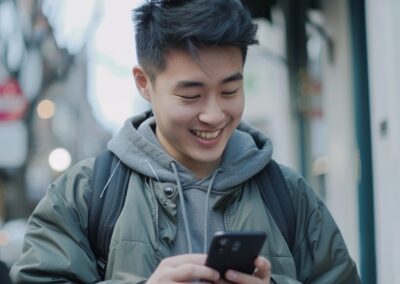Email marketing automation is a transformative process that leverages technology to enhance how businesses communicate with their audience. It involves setting up automated systems that send personalized emails based on specific triggers or actions taken by the user, ensuring that your message reaches the right person at the right time.
The Role of Email Automation Tools
Email automation tools are the backbone of your personalized email marketing strategy. They streamline the process of managing your subscriber list, allowing for efficient audience segmentation. These tools not only manage the sending of emails but also provide insights into how your campaigns are performing, helping you make data-driven decisions.
Importance of Segmentation
One of the key features of email automation tools is the ability to segment your audience. Segmentation involves dividing your subscriber list into smaller groups based on specific criteria such as demographics, purchasing behavior, or past interactions. This allows for more tailored messaging, as each segment can receive content that is directly relevant to their interests and needs, thereby increasing engagement.
Automating Customer Journeys
Automation allows businesses to create detailed customer journeys that guide prospects through the sales funnel. By setting up automated workflows that respond to user actions, like signing up for a newsletter or browsing a product page, businesses can provide timely and relevant information. This ensures that each touchpoint with the customer adds value and moves them closer to a purchasing decision.

Benefits of Personalized Email Automation
Personalized email automation offers several advantages that can transform how you interact with your leads. From increasing engagement to improving time efficiency, the benefits are substantial and can significantly enhance your marketing efforts.
Increased Engagement
When you send personalized content that speaks directly to your subscribers’ interests and needs, you’re more likely to capture their attention. Personalized emails have higher open rates and click-through rates because they feel relevant and valuable to the recipient. This level of engagement can lead to stronger relationships with your audience, resulting in higher customer retention and loyalty.
Time Efficiency
Automation means you can set up your email campaigns once and let them run on autopilot. This frees up your time to focus on other aspects of your business, such as product development, customer service, and strategy planning. With automated systems handling the repetitive tasks, your team can concentrate on more strategic initiatives that drive growth.
Improved Lead Nurturing
With personalized email automation, you can guide your leads through the sales funnel more effectively. By sending targeted content at different stages of the buyer’s journey, you can nurture relationships and move prospects closer to making a purchase decision. This approach not only boosts conversion rates but also ensures that your leads receive the information they need to make informed decisions.
Enhanced Customer Experience
By using personalized email automation, businesses can significantly enhance the customer experience. Automated emails can provide timely updates, special offers, and personalized recommendations, making each interaction more meaningful. This not only improves satisfaction but also encourages repeat business and positive word-of-mouth referrals.
How to Get Started with Personalized Email Automation
To successfully implement personalized email automation, it’s essential to follow a structured approach. This involves selecting the right tools, understanding your audience, and creating compelling content.
Step 1: Choose the Right Email Automation Tool
Selecting the right tool is crucial for your email automation success. Look for a platform that offers features like list segmentation, customizable templates, and detailed analytics. Make sure it integrates with your existing CRM or other marketing tools to streamline your efforts. Consider factors such as ease of use, scalability, and customer support when making your choice.
Step 2: Define Your Audience Segments
To deliver personalized content, you need to understand your audience. Segment your subscriber list based on criteria such as demographics, behavior, and engagement levels. This will enable you to tailor your messages to each group’s unique needs and preferences. Regularly review and update your segments to ensure they reflect the current behavior and interests of your audience.
Step 3: Create Engaging Email Content
Crafting compelling email content is essential for capturing your audience’s attention. Focus on writing clear, concise, and engaging copy that addresses your subscribers’ pain points and offers solutions. Use dynamic content to personalize emails with the recipient’s name, location, or other relevant details. Incorporate multimedia elements such as images and videos to make your emails visually appealing and more engaging.
Step 4: Set Up Automated Workflows
Automated workflows are the heart of your email automation strategy. These are sequences of emails triggered by specific actions, such as signing up for your newsletter or abandoning a cart. Design workflows that guide subscribers through the customer journey, providing them with valuable information and offers at each stage. Regularly test and refine these workflows to ensure they remain effective and aligned with your marketing goals.
Step 5: Monitor and Adjust Your Strategy
Once your email automation is up and running, it’s crucial to monitor its performance regularly. Use analytics tools to track key metrics such as open rates, click-through rates, and conversions. Based on the insights gathered, make necessary adjustments to your content, segments, and workflows to optimize performance. Continuous improvement is key to maintaining the effectiveness of your email automation strategy.

Best Practices for Personalized Email Automation
To maximize the effectiveness of your email automation efforts, consider these best practices. By adhering to these guidelines, you can ensure that your campaigns are both effective and compliant.
Test and Optimize
Regularly test different elements of your emails, such as subject lines, content, and send times, to determine what resonates best with your audience. Use A/B testing to compare variations and make data-driven decisions to improve your campaigns. Experiment with different types of content and personalization techniques to discover what works best for your audience.
Monitor Performance
Keep a close eye on your email campaign metrics, such as open rates, click-through rates, and conversion rates. These insights will help you identify areas for improvement and optimize your strategy for better results. Use advanced analytics tools to gain deeper insights into your audience’s behavior and preferences, enabling you to refine your approach continually.
Maintain List Hygiene
Ensure your subscriber list remains clean and up-to-date by regularly removing inactive or unengaged contacts. This will help improve your email deliverability and ensure your messages reach the right audience. Implement double opt-in processes to confirm subscribers’ interest and reduce the chances of spam complaints, further enhancing your list quality.
Comply with Regulations
Stay informed about email marketing regulations, such as the CAN-SPAM Act and GDPR, to ensure your campaigns are compliant. This includes obtaining explicit consent from subscribers and providing an easy way for them to opt-out of your emails. Regularly review and update your privacy policies to reflect current legal requirements and ensure transparency with your audience.
Personalization Beyond Names
While using a subscriber’s name is a good start, true personalization goes beyond that. Incorporate data such as past purchase history, browsing behavior, and geographic location to create highly relevant and timely emails. This level of personalization can significantly enhance the effectiveness of your campaigns and strengthen customer relationships.
Conclusion
Personalized email automation is a powerful tool that can help you nurture leads without lifting a finger. By leveraging the right email marketing automation tools and implementing best practices, you can create tailored experiences that resonate with your audience and drive results. Start automating your email campaigns today and watch your business grow. As you continue to refine your strategy, you’ll not only enhance your marketing efforts but also build stronger, more meaningful relationships with your customers.
Ready to Elevate Your Email Marketing?
If you’re looking to enhance your email marketing strategy with high-quality newsletters, contact Newsletter Pro today! Our team of experts is dedicated to helping you create personalized, engaging content that resonates with your audience. Don’t miss out on the opportunity to nurture your leads effectively—reach out to us now and take your email campaigns to the next level!






